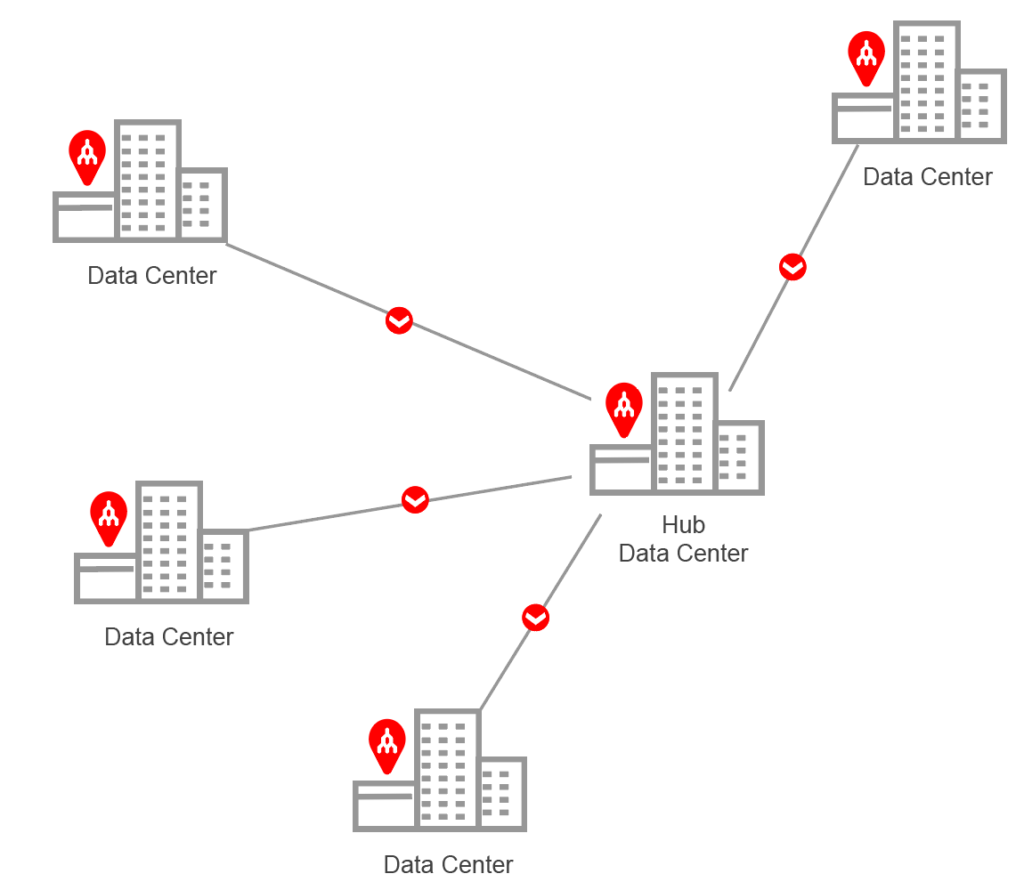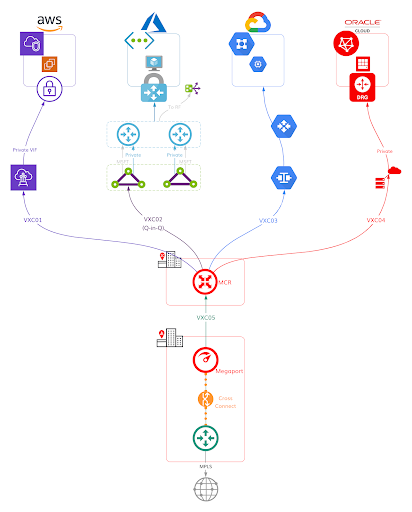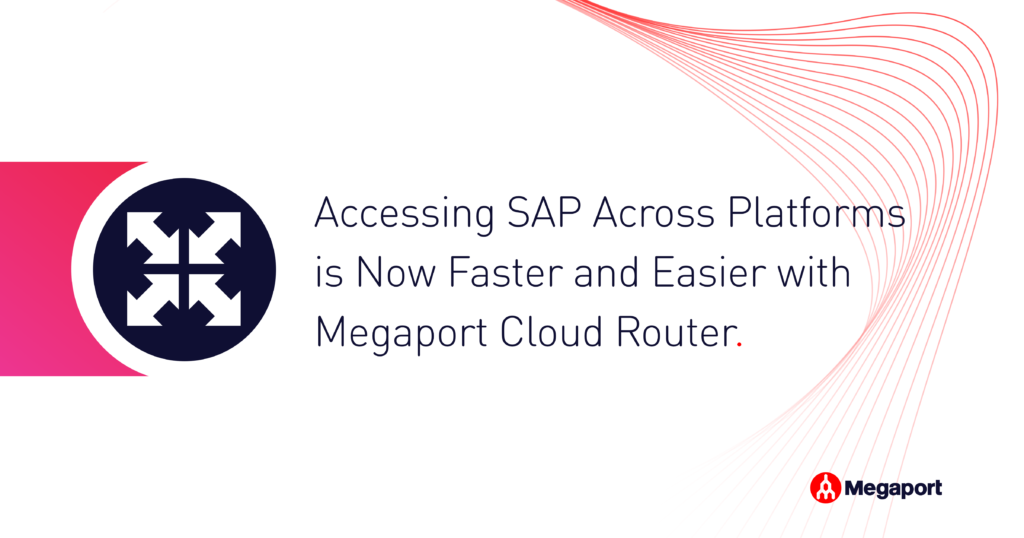
5 Reasons to Modernize and Software-Define Your MPLS Network
- Cloud networking
- March 4, 2021
- RSS Feed
Enterprises can design a hybrid software-defined MPLS network that frees them from long-term contracts while improving network performance and reliability.
Enterprise WAN connectivity has quickly evolved beyond the use of traditional MPLS providers. With the rise of software-defined solutions like SDN and SD-WAN thanks to their cost benefits, flexibility, speed of deployment, and scalability, enterprises can now design a hybrid software-defined MPLS network that frees organizations from long-term contracts while improving network performance and reliability.
This post examines the reasons enterprises should consider modernizing their MPLS networks, while discussing key considerations when integrating a software-defined WAN connectivity model with your MPLS network:
- Advantages to Software-Defining Your MPLS Network
- Key Considerations
- Integrating Megaport’s Software Defined Network (SDN) with MPLS
- Next steps to SD-WAN
Five reasons to software-define your MPLS network
Here are five reasons to integrate software-defined connectivity into your MPLS network:
- Flexibility for optimal pricing: Compared to MPLS providers in most markets, software-defined solutions like Megaport can be extremely cost-effective. At any time, you can add or delete services or adjust bandwidth for connections. This ensures you always have the right price, you can easily scale as your business grows, and you only pay for what you need. Using a software-defined solution, your network can be elastic and fully adjustable as your business needs change.
- Freedom from long-term contracts: Unlike traditional MPLS services, you won’t get locked into long-term financial commitments, so you don’t have to predict traffic profiles for years at a time or get locked into a specific topology.
- Faster deployment: You can add and delete connections within minutes through a single pane of glass such as the Megaport Portal, or even automate through our open API.
- Improved network performance: Direct Layer 2 connections provide consistent latency and, in many cases, lower latency between locations, improving overall performance and increasing throughput.
- Better network reliability: Each Megaport-enabled data center has two or more diverse fiber connections into the Megaport global backbone network, and each VXC is protected by all available fiber paths at the data center. Consequently, each connection automatically fails over to the next.
Key considerations
When thinking about migrating all or part of your MPLS network to a software-defined network like Megaport’s, here are some key considerations:
- Dealing with multiple providers and data center operators: The traditional MPLS provider relationship restricts you to a single network with a fixed, hardware-based configuration, inhibiting your ability to grow quickly. Switching providers is never easy, which is why finding a NaaS provider that’s vendor-agnostic, like Megaport, will likely make your migration smoother, giving you the choice of cloud service providers (CSPs) and data centers to easily connect to.
- Connecting new vendor ports to MPLS circuits: It can be difficult to terminate a connection from a port to a carrier MPLS interface. MPLS providers are often resistant to adding new vendor details to their routers and allowing access to new vendor traffic. Whether or not your MPLS provider will cooperate with an outside vendor needs to be a consideration in your design.
- Procuring the last mile: One of the biggest challenges in moving from MPLS to SDN is procuring, managing, and paying for “last mile” connectivity. See next steps with SD-WAN.
Integrating Megaport’s SDN with your existing MPLS network
Megaport’s SDN supports hybrid configurations for modular network design where you can easily deploy and manage ports, cloud-to-cloud connectivity, and connectivity between data centers to integrate them with your existing MPLS network infrastructure.
Connectivity between data centers
With a vendor-agnostic SDN like Megaport’s, you can easily connect multiple sites and data centers and replace this part of your MPLS WAN. We provide extensive connectivity between over 700 data centers around the globe, reducing costs and improving performance for connections between data centers. Our software-defined connectivity model supports a more agile, on-demand networking approach, without long-term, fixed-price contracts.
By using Ports (physical ports in Megaport-enabled data centers) and Virtual Cross-Connects (VXCs), you can replace traditional point-to-point links and easily establish a secure, reliable connection between any of the global Megaport-enabled locations.
You can connect two or 20 data centers, set up a hub-and-spoke model, or create a fully meshed network.

For more information about Ports and VXCs:
Connections between clouds
Megaport Cloud Router (MCR) is a managed virtual router service that establishes Layer 3 connectivity on the worldwide Megaport SDN.
Incorporating MCR into your network design lets you manage routing decisions. MCRs don’t require a physical cross-connect, letting you configure them close to your data sources to minimize latency and interconnect to Ports or CSPs using VXCs.
MCR can be inserted as a hub to route traffic to multiple ports throughout the network, which optimizes traffic and reduces latency and bandwidth costs.
A hub between cloud service providers
A cloud-to-cloud router like MCR provides a smart way to integrate your cloud strategy with your existing MPLS network. As a virtual routing service, MCR can solve the complexities and costs that come with connecting your MPLS network to CSPs.
You can add MCR as a node, or multiple nodes, on your existing MPLS network. MCR sits on top of the Megaport SDN at Layer 3 to provide a point-to-multipoint connection model and serves as a hub between CSPs.
Your MPLS provider must support a single peer to MCR from their Provider Edge (PE) device.

For more information about MCR cloud configurations:
Connecting your regional hubs
You can use MCR as the primary connection point for regional branch offices, CSPs, and data centers. In this hub-and-spoke design, MCR provides the hub and connects to spokes that are organized into regions based on proximity.
The MCR hub connects your regional branches, CSPs, and data centers, with VXCs connecting the regional MCRs.

For more information about MCR:
Next steps to SD-WAN
Megaport Virtual Edge (MVE) incorporates SD-WAN solutions directly into the Megaport ecosystem, enabling the “last mile” and allowing branch office connectivity and Network Functions Virtualization (NFV).
MVE allows you to replace even more MPLS functionality, letting you use Megaport to manage connections between branches and the data center. Customers no longer need to be in a multi-tenant data center to take advantage of Megaport’s interconnection capabilities. IP transit gateway functionality enables internet-connected locations to access the Megaport SDN.
For more information about MVE, read our announcement blog or download our infopaper.
Contributors:
- John Veizades, VP Engineering & Product, Megaport
- Steven Wan, Product Director, Megaport
- Steve Tu, Principal Solutions Architect, Megaport
- Jason Bordujenko, Head of Solutions, APAC, Megaport





